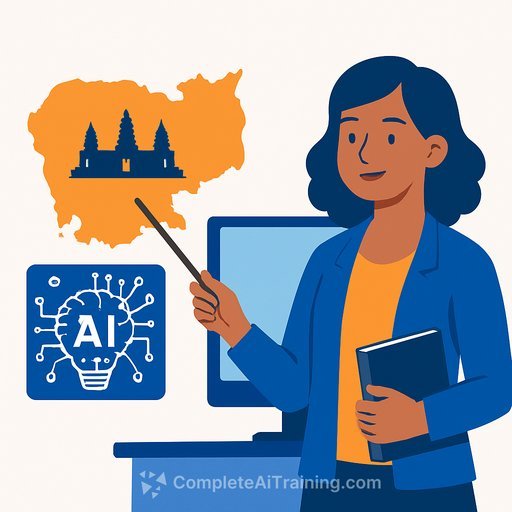Teachers Are Catalysts of Cambodia's AI Transformation, Says Hun Manet
PHNOM PENH - On World Teachers' Day, Prime Minister Hun Manet said educators will drive Cambodia's transition to effective AI use across schools. The national theme, "Teacher is the catalyst of AI transformation," places teachers at the center of how AI enters classrooms and supports learning.
His message ties directly to the Pentagonal Strategy - Phase I, which names human development and digital transformation as core pillars for Cambodia's long-term growth. The takeaway for schools: invest in teacher capacity first, then scale responsible AI practices system-wide.
What this means for schools
Minister of Education, Youth and Sport Hang Chuon Naron said AI will extend teacher capability and improve instruction. "Teachers can use AI to prepare lesson plans and provide personalized learning to students," he noted.
Esther McFarlane, chief of education at UNESCO to Phnom Penh, stressed that educators set the vision for how technology supports thinking and creativity. She added, "With AI reshaping education, we must ensure new technologies support and empower teachers, not replace them," calling for investment in mentoring, research, and professional development.
Practical ways teachers can use AI now
- Lesson planning: generate outlines, examples, questions, and scaffolds aligned to standards and local context.
- Personalized practice: create leveled exercises, reading passages, and feedback matched to individual needs.
- Formative assessment: draft exit tickets, rubrics, and quick checks for understanding; summarize student responses.
- Language support: translate instructions, simplify texts, and create bilingual glossaries for diverse learners.
- Content adaptation: modify materials for different modalities (text, prompts for visuals, transcripts for audio).
- Teacher workflow: automate routine tasks like emails, seating plans, and meeting notes while keeping data safe.
Keep teachers at the center
- Set clear policies for AI use: transparency, accuracy checks, data privacy, and academic integrity.
- Run ongoing PD: short, hands-on sessions with classroom use cases and peer coaching.
- Support inquiry: encourage teacher-led trials, collect evidence of learning gains, and share what works.
- Focus on equity: ensure access to devices, connectivity, and training across urban and rural schools.
For global guidance on responsible classroom use, see UNESCO's recommendations on AI in education here.
Momentum in Cambodia
To mark World Teachers' Day, the National Institute of Education in Phnom Penh hosted a two-day exhibition on "Utilizing AI Technology in Education." About 50 AI-related works from 14 institutions were presented, highlighting local creativity and classroom-focused solutions.
Next steps for education leaders
- Audit readiness: infrastructure, teacher confidence, curriculum links, and data safeguards.
- Pilot with purpose: pick one subject or grade, define 2-3 success metrics, and review results after six weeks.
- Build a teacher AI fellows group: volunteer educators test tools, document practices, and mentor peers.
- Adopt tool guidelines: accuracy verification, citation standards, and limits on student data use.
- Budget for PD and support: micro-credentials, coaching time, and release time for collaborative planning.
- Share wins: open repositories of lesson plans, prompts, and rubrics adapted to Cambodian curricula.
Skill up with structured learning
If you're planning a PD track or personal learning path, explore AI upskilling paths for educators to compare course options and certifications aligned to school needs.
The message is clear: Cambodia's AI progress runs through teachers. Equip educators, set responsible guardrails, and focus on learning outcomes-then scale what proves effective.
Your membership also unlocks:






